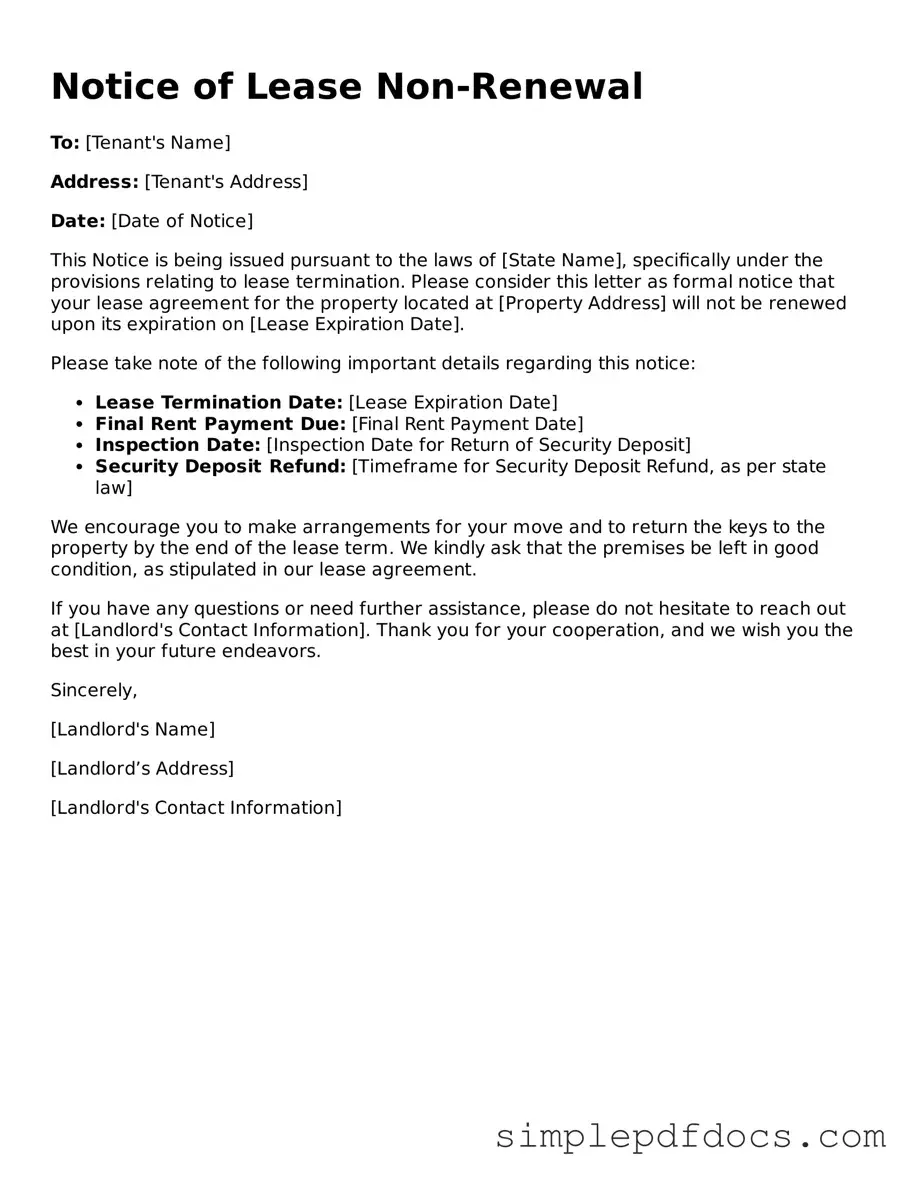Attorney-Approved Notice of Lease Non-Renewal Form
The Notice of Lease Non-Renewal form is a document used by landlords or tenants to formally communicate the decision not to renew a lease agreement at the end of its term. This notice serves to provide clear notification, allowing both parties to prepare for the transition. Understanding this form is essential for ensuring compliance with lease terms and local regulations.
Get Document Here
